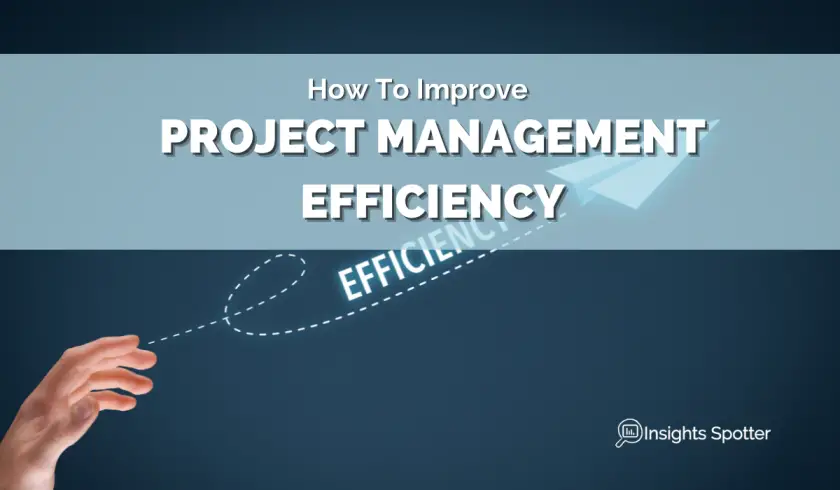How To Improve Project Management Efficiency
It’s no secret that project management provides clear direction and defines the success of many business initiatives. However, not all project managers (PMs) can successfully execute projects that satisfy all their key stakeholders, like their clients or supervisors.
Improve project success by selecting the right methodology, utilising project management software & AI, and implementing continuous improvement. Learn the pros & cons of Waterfall & Agile methodologies. Master expert tips to increase productivity & output quality.
This post discusses the importance of selecting the right project management methodology, utilising proper tools and skills, and implementing continuous improvement. We also delve into the pros and cons of popular methodologies such as Waterfall and Agile and provide expert tips for increasing productivity and output quality. By reading further, you’ll learn how to take your project management to the next level and achieve success.
Learn why project management efficiency matters and how to improve it as you read on.

What Does It Mean To Be Efficient in Project Management?
Before we jump in, shall we answer this question? To be efficient in project management means achieving project goals and objectives within budget and time constraints. This includes effectively planning, organising, and executing the project while using resources effectively and minimising waste. When a project is efficient, the team can hit target goals without needing to increase costs and adjust the time frame significantly.
Additionally, efficiency in project management leads to higher product quality and maintained productivity among the team members. In short, efficiency in project management means achieving the project objectives with the least amount of resources, time and effort.
In a nutshell, an efficient project consists of a smooth workflow and effective task execution. All these translate into quality output that doesn’t jeopardise costs, schedule and resources. While it doesn’t necessarily suggest an absence of roadblocks, it indicates that proper problem-solving and effective planning were implemented to minimise debilitating problems.
1. Use Effective Project Management Methodologies for Efficiency
Choosing the project management methodology is crucial for the lift-off and sustenance of your project execution. The option you choose will dictate the path your and your team will take throughout the timeline, as well as the budget you propose for approval.
Furthermore, the right methodology will depend on several factors, including project characteristics and type, the level of stakeholder involvement, budget, risk tolerance, scope, flexibility, and so on. The following are some of the most popular project management methodologies.
Waterfall Methodology
Waterfall Methodology As the most traditional PM methodology, waterfall follows a sequential approach. Before you move to the next step, you have to complete the previous stage. It’s linear and unidirectional, so you can’t go back when you move on to the next step – much like a waterfall.
The main advantage of the Waterfall methodology is that it is easy to understand and implement. Each phase of the project is completed before the next one begins, which helps to ensure that the project stays on schedule and within budget. Additionally, the methodology is well suited for projects where the requirements are well-defined, the project’s scope is not likely to change, and the budget is fixed. These projects could be construction, manufacturing, and assembly projects, well-defined regulations, and projects with a clear end goal and minimal changes.
However, it’s important to note that the Waterfall methodology has limitations. Because each project phase is completed before the next one begins, it can be challenging to change it once a particular phase is completed. This means that if requirements change or new information becomes available, it can be challenging to incorporate these changes into the project. Additionally, testing is typically done after development is complete; it can be challenging to identify and address issues with the project until the later stages of the project.
Consider the waterfall methodology if you have a definite project goal and if it requires regulation or documentation. However, if the project requires multiple testing or changes to the project during the later stages, you may want to go for another option.
Agile Methodology
This methodology involves segmenting the project into phases with regular assessments and readjustments. Agile has gained popularity over the years because it allows a certain degree of flexibility not found in the waterfall methodology. The Agile methodology is based on the Agile Manifesto, which emphasises flexibility, collaboration, and customer satisfaction. The Agile framework is divided into different iterations or sprints, each delivering a working software version. It allows teams to adapt to change and deliver working software frequently.
One of the main benefits of the Agile methodology is its flexibility. Because the project is divided into smaller iterations, it’s easier to make changes as new information becomes available. Additionally, the regular assessments and readjustments allow the team to stay on track and ensure that the project meets the customer’s needs.
However, despite its reputation for driving efficiency in project management, there are instances where the methodology may not be the best fit for a particular project. For example, projects with well-defined requirements, fixed budgets, and a clear end goal may better suit the Waterfall methodology. Additionally, projects with a high degree of uncertainty or requiring a significant amount of testing may not be well suited for the Agile methodology. Therefore, it’s crucial to know when not to use agile.
In general, Agile methodology is best suited for projects where the requirements are not well defined, the scope is expected to change over time, where the customer is heavily involved, and where the project’s end goal is unclear. These projects could be software development, marketing campaigns, and product development projects.
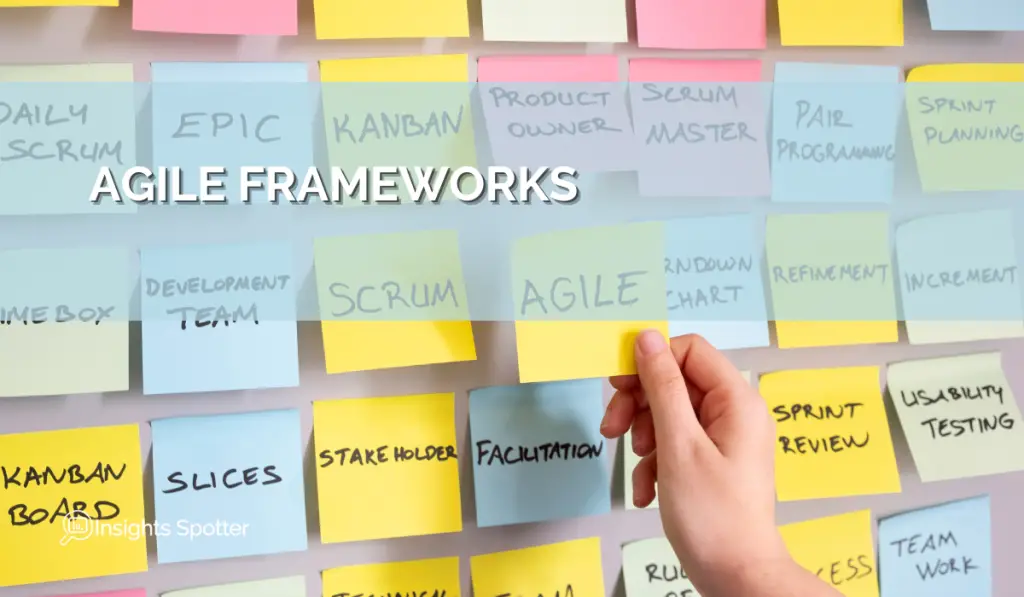
Here are some frameworks that could fit your project. But each of these Agile frameworks has its own strengths and weaknesses, and it’s important to consider the specific needs of your project when choosing which framework to use.
- Scrum: Scrum is one of the most popular Agile frameworks and is often used for software development projects. It is a framework for managing and completing complex projects. The Scrum framework is divided into a series of sprints, each delivering a working version of the software. It is a team-based approach with a strong emphasis on collaboration and communication.
- Kanban: Kanban is a framework that is used to manage and improve workflows. It is based on Lean manufacturing principles and is commonly used in manufacturing and service industries. The Kanban framework is based on visualising the workflow, setting work-in-progress limits, and implementing a pull system to manage work flow.
- Crystal: The Crystal family of Agile methodologies is tailored to different project sizes and complexity. These methodologies are designed to be lightweight and flexible, with a focus on communication, feedback, and adaptability.
- Lean: Lean is a methodology based on the principles of Lean manufacturing and is often used in manufacturing and service industries. The Lean methodology is focused on reducing waste, improving quality, and increasing efficiency.
- Scrumban: Scrumban is a hybrid framework that combines the best elements of Scrum and Kanban. It is used to manage and improve workflows and is based on visualising the workflow, setting work-in-progress limits, and implementing a pull system to control workflow. Scrumban allows teams to visualise their workflow, limit work in progress, and implement a pull system to manage workflow. It also allows teams to respond to changes more flexibly than traditional Scrum methodologies.
- Dynamic systems development method (DSDM): DSDM is a methodology that is designed to be flexible and adaptive, and is best suited for projects with rapidly changing requirements. DSDM delivers working software as quickly as possible, emphasising collaboration and communication.
- Extreme programming (XP): XP is a methodology that is designed for software development projects. It emphasises programming in pairs, testing, and continuous integration. XP is a highly disciplined methodology that is best suited for small teams working on small to medium-sized projects.
- Feature-driven development (FDD): FDD is a methodology that is designed for software development projects. It is a highly iterative and incremental approach that is focused on delivering working software. FDD emphasises feature-based planning, short development cycles, and continuous improvement.
- Rapid application development (RAD): RAD is a methodology that is designed to deliver working software quickly. RAD is based on prototyping and iterative development and best suited for projects with rapidly changing requirements.
- Adaptive Project Framework (APF): APF is a methodology that is designed to be flexible and adaptive. It is based on the principles of Agile methods but focuses on delivering working software as quickly as possible. APF emphasises collaboration, communication, and continuous improvement.
If you would like to learn more about agile methodologies, check out my post here: Agile

Critical Path Methodology
When using this methodology, you identify tasks based on priorities, how much time and resources they need for completion, and draw a critical path based on your analysis. This will provide a feasible timeline for the project and is ideal for projects with multiple dependencies.
The critical path methodology is heavy on a visual approach. You can use visual tools like Gantt charts and graphs to plot the analysis from various data.
Package-Enabled Reengineering (PER) Methodology
For businesses and teams that need to redesign their products or reorganise their pipeline, package-enabled reengineering (PER) is an excellent way to go. This methodology is designed to transform critical aspects of your business operations. It’s ideal for those who need a complete overhaul and may not be the best choice for businesses with established and working systems.
Other methods and techniques used for project management efficiency are six sigma (for reinforcing output quality and consistency) and outcome mapping (for delivering tangible results). Which methodology you use will impact the overall outcome of the project, including how smooth the execution is from start to beginning.
2. Capitalise on Valuable Management Tools
Project management software products are designed specifically to expedite tasks and make the project more efficient. Using them can leverage your resources and help speed up the project altogether.
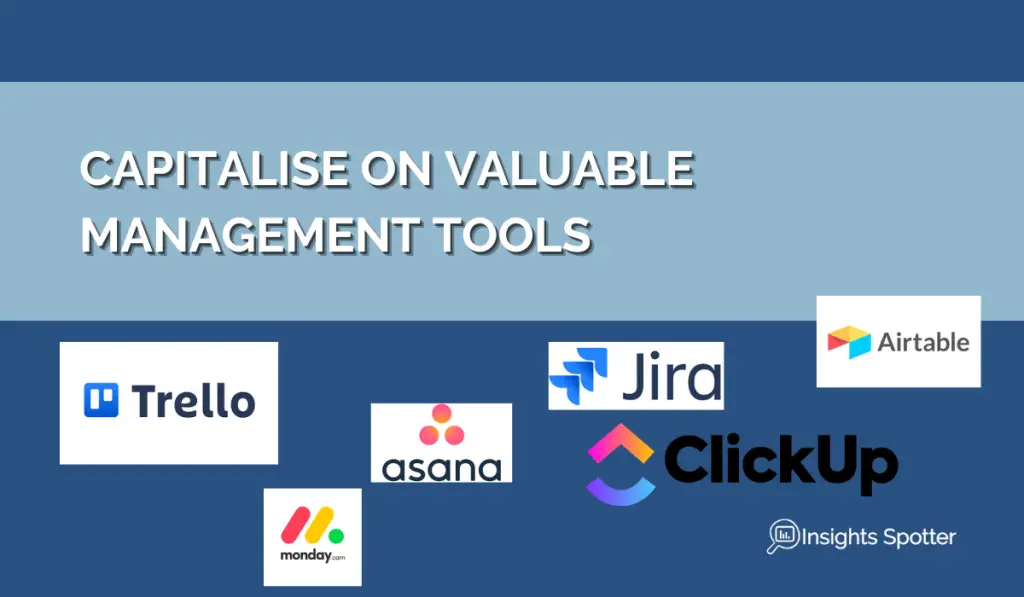
Plenty of project management software dominates the market. Choosing a solution will depend on your priority as a manager. While most software products are equipped with features for task management, communication, collaboration, project tracking, and reporting, some can offer better solutions in specific areas.
Here are some of the best project management software and tools you can use to improve project efficiency based on their standout feature.
- Great All-in-one PM Platform: ClickUp
- Best for Project Planning: Wrike
- Recommended for Project Tracking: Trello
- Best for Team Collaboration: Asana
- Designed for Agile Entry Point: Kanban Tool
- Ideal for Project Visualization: GanttPro
- Great for Building Databases: Airtable
- Best for Risk Management: JIRA
- Best for project automation: monday.com
- Top Choice for Document Storage and Sharing: Google Drive
Pro Tip: If you’re not well-versed with these software products, you may get overwhelmed choosing the best one for your workflow and project development. It’s best to understand first the pros and cons of project management software and be familiar with how they work before subscribing to any plan.

3. Hone Essential Project Management Skills
Every project manager must possess various skills to do their job effectively. Not only do these capabilities lead you to project opportunities, but they also drive the completion of the project altogether.
Aside from the technical qualifications of PMs, such as planning, forecasting, risk assessment, and data analysis, your soft skills also play an essential part in competently performing your job. According to a 2020 study, the soft skills of project managers influence their success by up to 78.3%. Below are the top skills you should practice to ensure project management efficiency.
Leadership
Strong leadership skills, primarily the ability to motivate and inspire your team, are essential to keeping the work pipeline efficient – regardless of if you’re a business or project manager. Practising proper leadership also streamlines the operations and task execution.
If you’re not confident about your leadership skills, the best way to start improving is by reading books for management, learning from a mentor, and enrolling in supplementary PM courses.
Also, explore Mindful leadership. Mindful leaders are aware of their own emotions and those of their team and can lead with compassion and empathy. These leaders can create an environment that promotes collaboration and creativity, which can lead to better project management.
Problem-Solving
Roadblocks and project constraints are inevitable. But many successful PMs navigate these challenges through their problem-solving skills. These include the ability to sort priorities, critical thinking, and situation analysis.
Also, reducing the impact of any hurdle, especially during the project execution, ensures that the work pipeline and its timeline remain intact.
Decision-Making
Project management efficiency also requires sound decision-making, especially when the project experiences potential derailment.
PMs are expected to make logical decisions that improve any situation while protecting the integrity of the project and the team members. Along with your problem-solving skills, you can reinforce efficiency if you take the right steps in dealing with critical issues, using techniques like SWOT analysis.
Communication
It’s unlikely for project managers to demand efficiency without adequate communication skills. Whether it’s facilitating meetings, delivering reports, negotiating terms, problem-solving, or managing conflict, your ability to convey the right message depends on the effectiveness of your communication. This is even more crucial for projects with multiple managers, where you must collaborate on certain tasks.
It’s also important to use the right communication tools, such as email, instant messaging, and video conferencing, to ensure that everyone is on the same page.
Time and Budget Management
Time and budget are crucial elements of project management, along with business resources and methods. Establishing a feasible schedule and timeline allows team members to do their roles within specific timeframes. On the other hand, setting a realistic cost estimation ensures that critical issues like going over the budget are avoided. As a result, your project gets implemented according to plan.
Pro Tip: When your project exceeds the proposed budget, there are steps to bring it back on track. Read more about what to do when a project is over budget.

4. Develop an efficient project team for an effective project?
Having a highly functional project team contributes to project management efficiency. To land the best team members, create a good screening process during hiring and selection. Then, provide supplementary training, such as productivity software and task updating. Furthermore, conduct goal alignment orientation, role analysis, and team-building activities at the start of the project development. More than task execution, your team has to be on the same page as you are and should feel their value.
Furthermore, encouraging creativity and innovation can lead to more efficient and effective project management. This could include encouraging team members to develop new ideas, providing opportunities for them to experiment and try new things, and recognising and rewarding good ideas.
Do not disregard a remote work culture. Adopting a remote work culture can improve project management efficiency with more flexible work arrangements. By allowing team members to work remotely, you can reduce the time and costs associated with commuting and increase the well-being of staff members as family life can be balanced out; thus, with happy staff, you can increase productivity.
Finally, implement a mentorship program. A mentorship program can improve project management efficiency by providing team members with the necessary guidance and support. Not all team members have participated in change initiatives, and some good 101 training in project management could help to improve their skills, increase their confidence, and improve their overall performance.
5. Find ways to decrease effort
Find ways to automate project management tasks. Automation can significantly improve project management efficiency by reducing the time spent on repetitive tasks. Automation can be used for many tasks, from scheduling meetings and sending reminders to creating reports and analysing data.
One way to automate is to use Artificial Intelligence. AI can be used to improve project management efficiency in various ways, such as automating repetitive tasks, identifying and predicting risks, and tracking progress. AI can be integrated with project management software, chatbots, and virtual assistants to improve overall performance.
By Gartner
Finally, it would help if you considered a continuous improvement in running your project. Continuously looking for ways to improve project management processes and procedures can help to increase efficiency over time. This could include regularly reviewing project management processes, identifying areas for improvement, and implementing changes as needed.
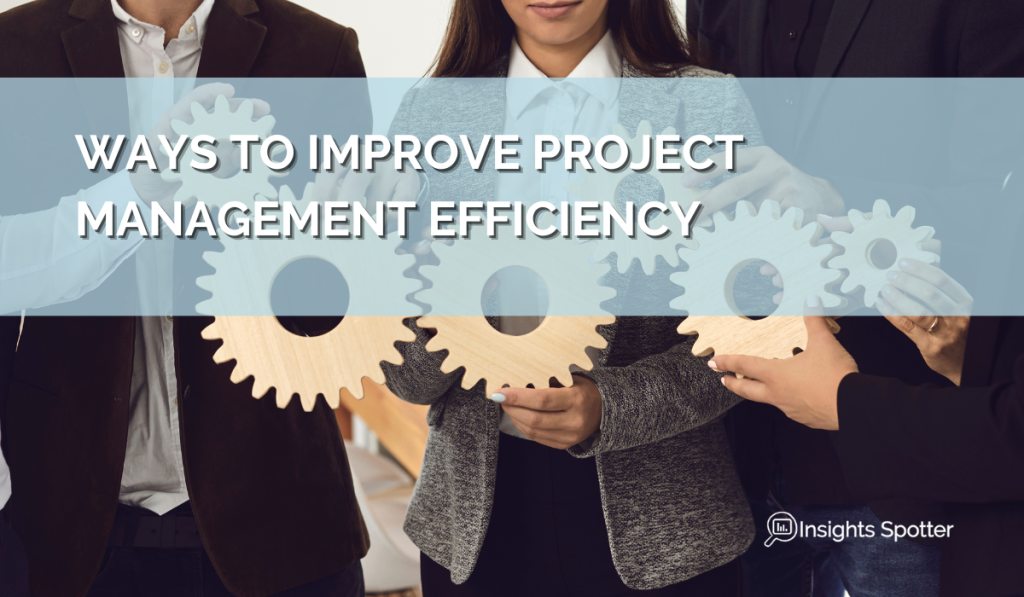
6. Other ways to Improve Project Management Efficiency
Comprehensive Project Planning
It is creating a detailed and well-structured plan that covers all aspects of the project. This type of planning considers all of the necessary tasks, resources, timelines, and contingencies to ensure that the project can be executed successfully.
Comprehensive planning includes:
- Identifying project goals and objectives.
- Determining the resources needed.
- Creating a detailed project schedule.
- Developing a risk management plan.
This type of planning also considers the external factors that might affect the project, such as resource availability, political and economic environment and stakeholders’ expectations. In short, comprehensive planning means creating a detailed and holistic plan that covers all aspects of the project to ensure successful execution.
Timeline, milestone, and work pipeline monitoring
Monitor and measure progress: Regularly monitoring and measuring progress is important in order to identify any issues or areas for improvement. This could include setting up regular progress reports and using tools such as Gantt charts, Kanban boards, and burndown charts to track progress.
Execution of contingency or backup solutions:
You need to develop a risk management plan to have a backup solution. Risk management is an important aspect of project management. By identifying potential risks and developing a plan to address them, i.e., in some cases, your backup, you can minimise the impact of those risks on the project and improve efficiency.
These requirements can be achieved by choosing an appropriate project management approach and using tools and software for automating certain tasks, expediting some steps execution phase, and generating valuable data for reporting.
Managing Project Management Task
Prioritising tasks: One of the most important aspects of project management is prioritising tasks effectively. This means identifying the most critical tasks that need to be completed first and allocating resources accordingly.
Delegate responsibilities: To improve efficiency, delegating tasks and responsibilities to the right team members is essential. This allows team members to focus on their strengths and ensures that tasks are completed on time.

7. Lead by Example – Business Cases
Case Study 1: Using the Right Methodology to Increase Efficiency
A media company specialising in video production was facing a challenging situation. They were producing multiple videos simultaneously but needed help to meet deadlines and stay within budget. The company had a talented team of video producers, editors, and animators, but their workflow could have been more organised, and they needed to utilise their resources more effectively. The company decided to use a more structured project management methodology to improve efficiency and stay competitive in the industry.
After evaluating different project management methodologies, the company adopted the Agile methodology. Agile is a flexible methodology that allows for regular assessment and adjustments throughout the project. The company implemented the Scrum framework, a specific type of Agile methodology that is well-suited for video production projects. Scrum emphasises continuous improvement, flexibility, and the ability to adapt to change.
The Scrum framework helped the company break the video production process into smaller, manageable chunks called sprints. Each sprint lasted 2 weeks, and at the end of each sprint, the team would review the progress and make any necessary adjustments. This allowed the company to quickly adapt to changes and stay on track to meet deadlines. The team also held daily stand-up meetings, where they would come together to discuss progress and any issues that arose. This helped improve team members’ communication and collaboration and allowed for quick problem-solving.
The Agile methodology and Scrum framework also helped the company to stay within budget. The company was able to identify any issues early on and make adjustments before they became too costly. The company also introduced time-tracking software that helped team members to track their time and stay on schedule. Additionally, The company introduced a priority matrix to identify better and prioritise tasks and ensure that the most important tasks were completed first.
As a result of these efforts, the company improved efficiency in their video production department. They could complete projects on average 20% ahead of schedule and within budget. The company also received positive feedback from clients for the quality of the videos produced and the timely delivery. The company saw an increase in their client base by 15% and revenue by 25% and became a reputable name in the industry for its efficient project management and high-quality videos.
Case Study 2: Reduce Effort and Increase efficiency
A global bank was undertaking a project to upgrade its online banking platform to improve customer experience. The project was large and complex, with a budget of $10 million and a deadline of 18 months. The bank needed to find ways to improve efficiency in order to meet the project deadlines and stay within budget.
One of the ways the bank decided to improve efficiency was by finding ways to decrease effort. They analysed the project workflow and identified areas where manual work could be replaced with automated processes. For example, they implemented an automated system for verifying customers’ identity and financial information during the onboarding process, which reduced the time spent on manual verification by 50%. This also helped improve the verification process’s accuracy and reduce the risk of errors.
The bank also decided to automate project management tasks. They integrated an AI-based project management software into their workflow, which helped to automate tasks such as scheduling meetings, sending reminders, and creating reports. This significantly reduced the time spent on these tasks by 40% and increased overall productivity.
In addition to this, the bank used data analytics and visualisation tools to track the progress of the project and identify areas for improvement. This helped them to continuously improve efficiency over time and stay on track to meet project deadlines. For example, they used data visualisation to identify and track key performance indicators such as project budget, resource utilisation and project timelines.
As a result of these efforts, the bank was able to successfully launch the upgraded online banking platform on time and within budget. The new platform provided a more seamless and personalised customer experience, which helped the bank increase customer satisfaction and retention and attract new customers. The bank also received positive feedback from customers and the industry for its innovative approach to digital banking.

Conclusion on How to Improve Project Management Efficiency
In conclusion, improving project management efficiency is essential for the success of any business initiative. By understanding the importance of project management methodology, proper tools, and needed skills, you can increase productivity and output quality, leaving a good impression on your clients and supervisors.
When choosing a project management methodology, it’s crucial to evaluate the project’s specific needs, including project characteristics, budget, risk tolerance, and scope. The Waterfall methodology best suits projects with well-defined requirements and a clear end goal. In contrast, the Agile methodology is more appropriate for projects with high uncertainty and regular adjustments.
In addition to choosing the suitable methodology, it’s also essential to use valuable management tools such as project management software, time tracking software, and visual tools like Gantt charts and graphs. These tools can streamline tasks and improve overall performance.
Another critical factor in improving project management efficiency is comprehensive planning. This includes creating detailed project plans, identifying and mitigating risks, and regularly reviewing and adjusting project plans. Continuously looking for ways to improve project management processes and procedures can help to increase efficiency over time.
Pro-tip: Automation can significantly improve project management efficiency by reducing the time spent on repetitive tasks. Automation can be used for many tasks, from scheduling meetings and sending reminders to creating reports and analysing data. Additionally, you can use Artificial Intelligence to improve project management efficiency in various ways, such as automating repetitive tasks, identifying and predicting risks, and tracking progress.
In summary, by understanding the importance of project management methodology, proper tools, and comprehensive planning, you can increase efficiency and achieve higher success in your projects. For better guidance, check out How to Be Successful in Project Management.
Subscribe to our newsletter!
 ABOUT ME
ABOUT ME
I am an experienced ex. Business & Data Analyst and now a Project Manager with multiple years of experience gained in several international companies.
These days, business problems require data crunching and telling stories to make the right decisions. Simply put, business stakeholders need insights into their projects and deliveries.
This is where I come in. I have learned and applied Python, Power BI, SQL and Excel to analyse and present data. Also, I gained experience in Project Management and Business Analysis. So, I can not only spot insights but execute business decisions. Moreover, I can teach you as well. Read More
Best Books








Latest Blog Posts
- Sustainable Project Management: Trends, Tools, & Strategies
- Unlocking Strategic Value: How NIST CSF 2.0 Shapes Project Choices for Better Outcomes
- Cybersecurity Project Management: Protecting Your Digital Frontier
- What are the Different Types of Planning in Project Management?
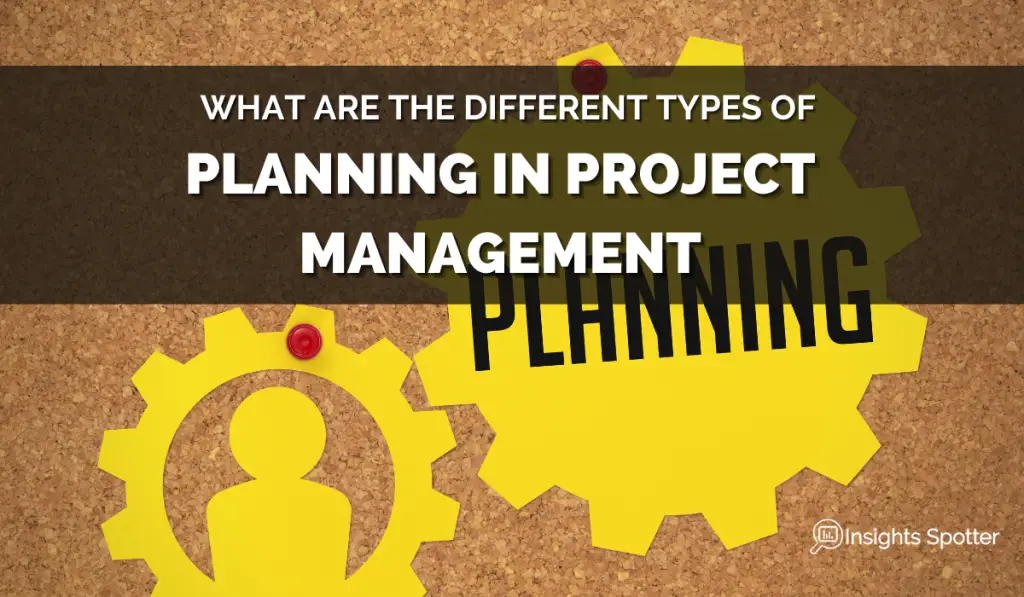
- Transforming Project Management with AI Software: Tools, Challenges, and Best Practices
- Unlocking the Benefits of AI-Powered Project Management
Need Project Manager’s Help!?
Check out the Fiverr marketplace if you do not have time to run your own projects or just need extra help. They do have multiple project professionals, including project managers. Maybe you will find just the right fit to take some burden from you. I have used Fiverr in the past. The prices are also not too bad. If you seek PM via the corporate route, it will be easily 5x the price.

